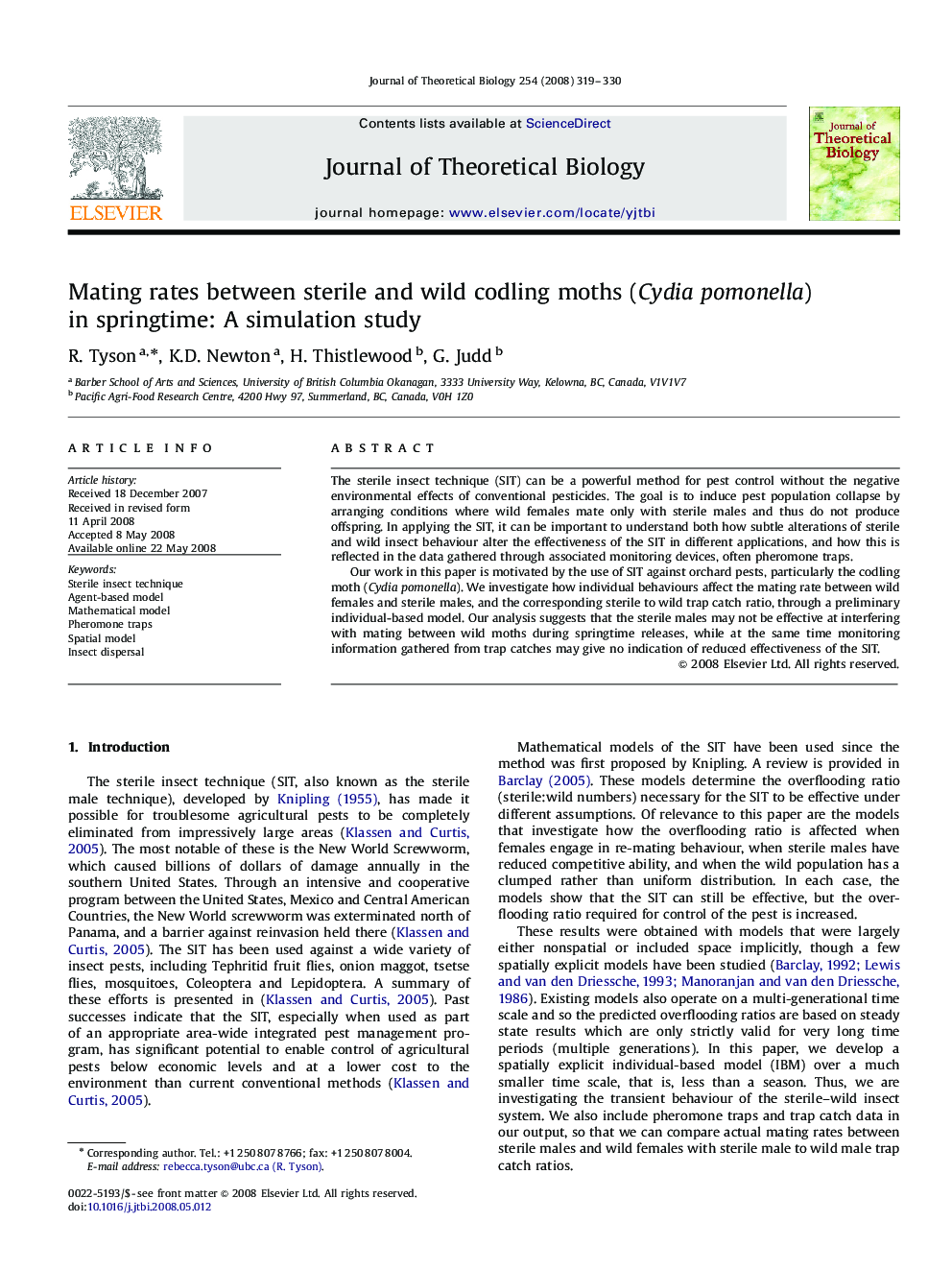| Article ID | Journal | Published Year | Pages | File Type |
|---|---|---|---|---|
| 4498371 | Journal of Theoretical Biology | 2008 | 12 Pages |
The sterile insect technique (SIT) can be a powerful method for pest control without the negative environmental effects of conventional pesticides. The goal is to induce pest population collapse by arranging conditions where wild females mate only with sterile males and thus do not produce offspring. In applying the SIT, it can be important to understand both how subtle alterations of sterile and wild insect behaviour alter the effectiveness of the SIT in different applications, and how this is reflected in the data gathered through associated monitoring devices, often pheromone traps.Our work in this paper is motivated by the use of SIT against orchard pests, particularly the codling moth (Cydia pomonella). We investigate how individual behaviours affect the mating rate between wild females and sterile males, and the corresponding sterile to wild trap catch ratio, through a preliminary individual-based model. Our analysis suggests that the sterile males may not be effective at interfering with mating between wild moths during springtime releases, while at the same time monitoring information gathered from trap catches may give no indication of reduced effectiveness of the SIT.
